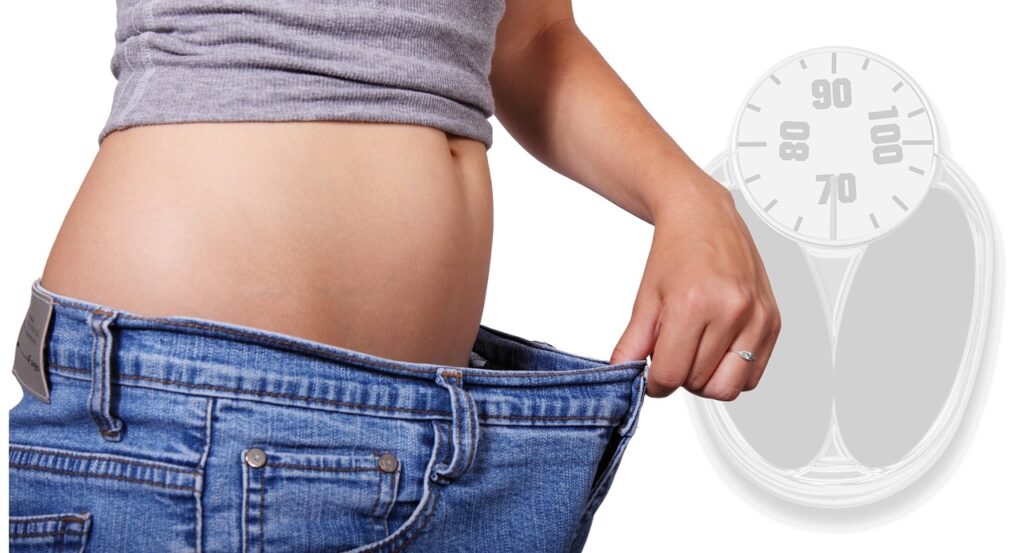Welcome to “The Best Diet for Weight Loss Explained.” In this article, you’ll explore various diet plans and identify the most effective options to help you shed those extra pounds. The journey to finding the best diet may seem overwhelming, but by the end of this read, you will have a clear understanding and a personalized plan that suits your lifestyle and health goals. Grab a cup of tea, get comfy, and let’s embark on this exciting path to a healthier you!
The Best Diet for Weight Loss Explained
Introduction
Have you ever wondered what the best diet for weight loss is? With countless weight loss programs, fad diets, and nutritional advice out there, it’s easy to feel overwhelmed and unsure about which path to follow. The truth is, the best diet for weight loss is not a one-size-fits-all approach. It varies from person to person based on factors like lifestyle, health conditions, and personal preferences. In this article, we’ll explore the different diets that have gained popularity and help you understand the key principles behind successful weight loss.
The Foundations of Weight Loss
Understanding Calories
Before diving into specific diets, it’s essential to grasp the basic concept of calories. Calories are units of energy that your body derives from food. Weight loss occurs when you consume fewer calories than your body needs, forcing it to use stored fat for energy. This state is known as a calorie deficit.
In simple terms, weight loss can be boiled down to the equation: [ \text – \text = \text ]
Metabolism Matters
Your metabolism refers to the processes your body uses to convert food into energy. A higher metabolism burns more calories at rest. Factors influencing metabolism include age, sex, muscle mass, and physical activity. While you can’t change your age or sex, you can increase muscle mass and physical activity to boost your metabolism.
Nutrient Balance
Nutrient balance means consuming the right amounts of macronutrients (carbohydrates, proteins, and fats) and micronutrients (vitamins and minerals). Maintaining a healthy nutrient balance is crucial for overall health and sustained weight loss. A diet that emphasizes just one macronutrient over the others might lead to short-term weight loss but isn’t sustainable in the long run.

Popular Diets for Weight Loss
The Ketogenic Diet
The ketogenic (keto) diet focuses on high-fat, moderate-protein, and low-carbohydrate intake. The goal is to push your body into a state of ketosis, in which it burns fat for fuel instead of carbohydrates.
Pros:
- Rapid initial weight loss.
- Reduced appetite and increased satiety.
Cons:
- Difficult to maintain long-term.
- Potential nutrient deficiencies.
Sample daily intake:
| Macronutrient | Percentage of Daily Calories |
|---|---|
| Carbohydrates | 5-10% |
| Proteins | 20-25% |
| Fats | 70-75% |
The Paleo Diet
The paleo diet encourages consuming whole foods and eliminating processed foods, grains, dairy, and legumes. It emphasizes meat, fruits, vegetables, nuts, and seeds.
Pros:
- Focuses on whole, unprocessed foods.
- Can improve blood sugar control.
Cons:
- Restrictive and can be hard to follow.
- Eliminates some nutrient-rich food groups.
The Mediterranean Diet
The Mediterranean diet mimics the eating patterns of Mediterranean countries like Greece and Italy. It focuses on plant-based foods, healthy fats, lean proteins, whole grains, and moderate alcohol consumption.
Pros:
- Promotes heart health.
- Sustainable and flexible.
Cons:
- Results may be slower compared to more restrictive diets.
- Requires planning and preparation.
Intermittent Fasting
Intermittent fasting (IF) involves cycling between periods of eating and fasting. Popular methods include the 16/8 method (16 hours of fasting, 8 hours of eating) and the 5:2 method (eat normally for 5 days, restrict calories for 2 days).
Pros:
- Can be easier to follow than continuous calorie restriction.
- Promotes insulin sensitivity.
Cons:
- May be challenging for people with busy schedules.
- Potential for overeating during eating windows.
Plant-Based Diets
Plant-based diets focus on consuming fruits, vegetables, grains, nuts, and seeds while eliminating or minimizing animal products. Examples include vegan and vegetarian diets.
Pros:
- High in fiber and nutrients.
- Can reduce the risk of chronic diseases.
Cons:
- Requires careful planning to avoid nutrient deficiencies.
- May not provide sufficient protein for some individuals.
Key Principles for Choosing the Best Diet
Personalization
The best diet for weight loss is one that fits your individual needs and preferences. Consider your lifestyle, food preferences, and any health conditions when choosing a diet. A personalized approach increases the likelihood of long-term success.
Sustainability
A diet should be sustainable in the long run. It’s better to follow a moderately effective diet you can maintain indefinitely than a highly effective one you can’t keep up with. If a diet feels too restrictive or complicated, you’re more likely to abandon it.
Nutrient Density
Focus on consuming nutrient-dense foods that provide essential vitamins and minerals without excessive calories. Incorporate a variety of fruits, vegetables, whole grains, lean proteins, and healthy fats.
Mindful Eating
Practicing mindful eating can help you understand your hunger cues and prevent overeating. Eat slowly, savor your food, and pay attention to how different foods make you feel. Tracking your meals and noting how they affect your energy levels and mood can also be beneficial.

Practical Tips for Weight Loss Success
Meal Planning and Preparation
Planning and preparing your meals in advance can help you make healthier choices and avoid impulse eating. Design a weekly menu, grocery shop with a list, and set aside time to cook and portion your meals.
Regular Physical Activity
Incorporate regular physical activity into your routine to support weight loss and overall health. Aim for a mix of cardiovascular exercises (like walking, running, or swimming) and strength training (like weight lifting or resistance exercises).
Hydration
Staying hydrated is essential for overall health and can aid in weight loss. Drinking water before meals can help you feel fuller and prevent overeating. Aim for at least eight 8-ounce glasses of water per day, but adjust based on your activity level and climate.
Quality Sleep
Quality sleep is critical for weight loss and overall well-being. Aim for 7-9 hours of sleep per night to support metabolic health, reduce stress, and improve mood. Establish a regular sleep schedule and create a calming bedtime routine.
Common Weight Loss Myths Debunked
Myth 1: Carbs Are the Enemy
Carbohydrates are often vilified in weight loss discussions, but not all carbs are created equal. Complex carbs, like whole grains, vegetables, and legumes, provide essential nutrients and sustained energy. It’s the refined carbs and sugars that should be limited.
Myth 2: Eating Fat Makes You Fat
While dietary fat is calorie-dense, it doesn’t necessarily lead to weight gain if consumed in appropriate quantities. Healthy fats, like those found in avocados, nuts, and olive oil, are vital for satiety and nutrient absorption.
Myth 3: Skipping Meals Is Effective
Skipping meals can lead to overeating later on and may slow down your metabolism. Regular, balanced meals support stable blood sugar levels and prevent extreme hunger, making it easier to stick to your diet.
Myth 4: You Have to Suffer to Lose Weight
Sustainable weight loss doesn’t require suffering. It’s about making healthier food choices, being mindful of portion sizes, and incorporating regular physical activity. Finding joy in healthy eating and exercise can make the process enjoyable rather than punishing.
Myth 5: Supplements Are Necessary
While some supplements may support weight loss, they shouldn’t replace a balanced diet and healthy habits. Rather than relying on supplements, focus on obtaining nutrients from whole foods and maintaining a well-rounded diet.

Monitoring and Adjusting Your Diet
Tracking Progress
Regularly tracking your progress can help you stay motivated and identify areas for improvement. Use a combination of methods, like weighing yourself weekly, taking body measurements, and monitoring how your clothes fit. Keep a food journal to record what you eat and how it affects your weight and health.
Making Adjustments
Weight loss isn’t always linear, and plateaus are common. If you hit a plateau, reassess your diet and exercise routine. You might need to adjust your calorie intake, change your workout routine, or focus more on nutrient-dense foods. It’s essential to stay patient and persistent, as consistency is key to long-term success.
Seeking Support
Having a support system can make a significant difference in your weight loss journey. Share your goals with friends and family, or join a weight loss group for encouragement and accountability. If needed, seek guidance from a registered dietitian or nutritionist to develop a personalized plan and address any challenges.
Conclusion
Finding the best diet for weight loss can seem daunting, but it ultimately comes down to choosing a sustainable, personalized approach that works for you. By understanding the key principles behind weight loss, debunking common myths, and incorporating practical tips, you can set yourself up for success. Remember, weight loss is a journey, not a destination, and making gradual, healthy changes will lead to lasting results. Stay committed, be patient, and enjoy the process of becoming a healthier, happier you!


